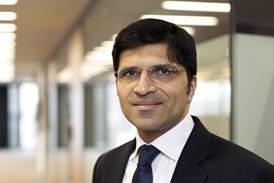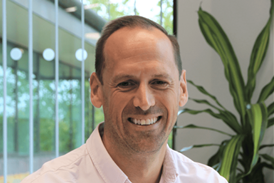The Nationwide Pension Scheme is struggling to find suitable illiquid investments as it targets 30 per cent of its portfolio in the assets, the scheme’s chief investment officer has said.
Speaking at an event at the Financial Times this week, Mark Hedges, CIO for the Nationwide Pension Scheme, said the fund was moving towards the increased allocation to illiquid assets, but it was taking time.
You need to build vintage. You need to find the right opportunities at the right time
Mark Hedges, Nationwide Pension Scheme
“That’s where we’re moving towards, we’re probably at 22 per cent,” he said. “We’re still developing those and we’d expect, certainly in the private markets, that that’s going to churn for a while.”
He added that the fund, though closed, had a duration of around 21 years and so did not feel under pressure to maintain high levels of liquidity.
“We’re quite happy to tie up assets and really use that illiquidity premium as a means to drive that extra value for the fund.”
However, he said: “The challenge is these things take time. We’ve had a target of 20 per cent [illiquidity] for private markets for five to six years and we’re still not there yet. You need to build vintage. You need to find the right opportunities at the right time.”
Warming up to illiquids
Defined benefit pension schemes have recognised the potential of investing in illiquid assets for some years now, even while many have lacked the confidence to invest. But Andy Green, chief investment officer at consultancy Hymans Robertson, said attitudes are shifting.
“The bigger funds are increasingly recognising that illiquidity is their friend, and shorter-dated illiquidity is definitely their friend.”
He said a challenge for schemes was working out the best way to access illiquid assets for their size.
Size is a factor due to the need to repeatedly monitor the levels of cash the scheme needs to keep available, which is difficult to maintain if it does not have a treasury function, Green said.
“As soon as you’re talking to a pension fund of less than £500m that becomes hard; as soon as you’re less than a billion they need to think about it; once you’re over a billion that becomes much more manageable.”
He argued this requirement drives smaller schemes to use more fund of fund-type arrangements, which have lighter governance.
Despite this, independent trustee Michael Deakin said the need for income was still a challenge for schemes.
He said: “We can’t afford to have large sums tied up in illiquid assets that don’t produce income. I think that’s another driver focusing us more towards assets that deliver a regular income even if the underlying capital is locked up for a number of years.”
“We might be happy to be illiquid up to, say, 10 years,” Deakin explained. “We don’t really want to be illiquid much longer unless it’s very secure, preferably infrastructure inflation-linked-type debt, in which case we think we can live with that.”
Alternative strategy
Hedges also outlined how the Nationwide scheme used alternatives within its portfolio to generate return and match assets.
“We look at alternatives in two ways,” he said. “We look at how we can generate extra return, and we have a pool of what we would call private market assets with a target of 20 per cent of the fund, and that looks at private equity, infrastructure equity, opportunistic real estate, core rented real estate, real estate debt and private credit.”
The fund also uses ground rents and long-lease property to generate income for the matching bucket in the portfolio.
He added: “Close to 60 per cent of our ground rents are retail prices index-linked, close to 60 per cent of our long-lease property is RPI-linked, so there’s a good mix within there that gives us some inflation protection.”














